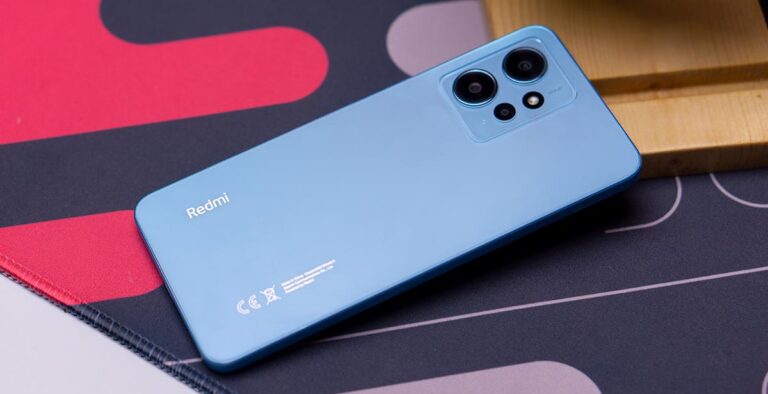
Xiaomi’s Redmi Note 12 is officially here in the Philippines but we are not getting the 5G variant but the 4G model instead. It comes with a Snapdragon 685, triple rear cameras with a 50MP f/1.8 main lens, and a 5,000mAh battery that supports 33W Turbo Charging. It also includes a 6.57-inch 2400 x 1080 AMOLED screen, which is a great addition to an affordable smartphone.
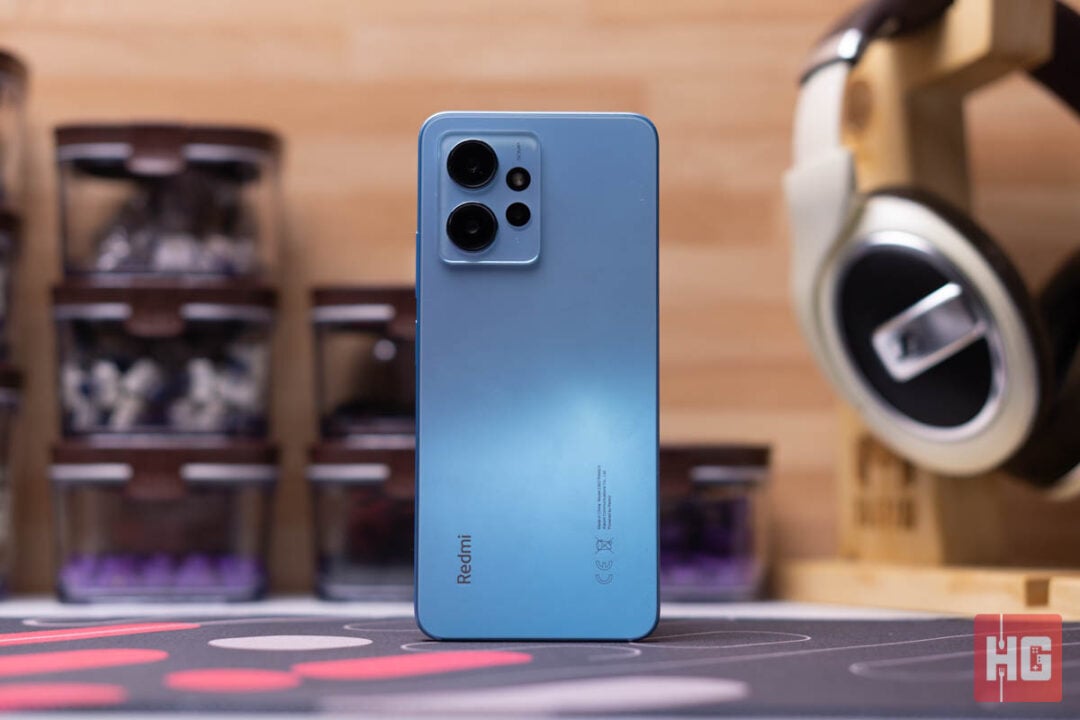
| Chipset | Qualcomm Snapdragon 685 |
| Screen | 6.7-inch AMOLED, 2400 x 1080, 120Hz, Gorilla Glass 3 |
| RAM | 4GB, 6GB, 8GB LPDDR4X |
| OS | Android 13, MIUI 14 |
| Rear Camera | 50MP f/1.8 Main, 8MP f/2.2 Ultrawide, 2MP f/2.4 Macro |
| Front Camera | 13MP f/2.45 |
| Storage | 64GB, 128GB UFS 2.2, MicroSD |
| Network | Dual-SIM, 4G |
| Connectivity | WiFi 802.11ac, Bluetooth 5.2, NFC, USB-C, 3.5mm Audio Jack |
| Battery | 5,000mAh, 33W Fast Charging |
| Others | Side-Mounted Fingerprint Scanner, AI Face Unlock, IP53 Dust and Water Resistance |
| Dimensions | 165.66 x 75.96 x 7.85mm |
| Weight | 183.5g |
| Colors | Onyx Gray, Ice Blue, Mint Green |
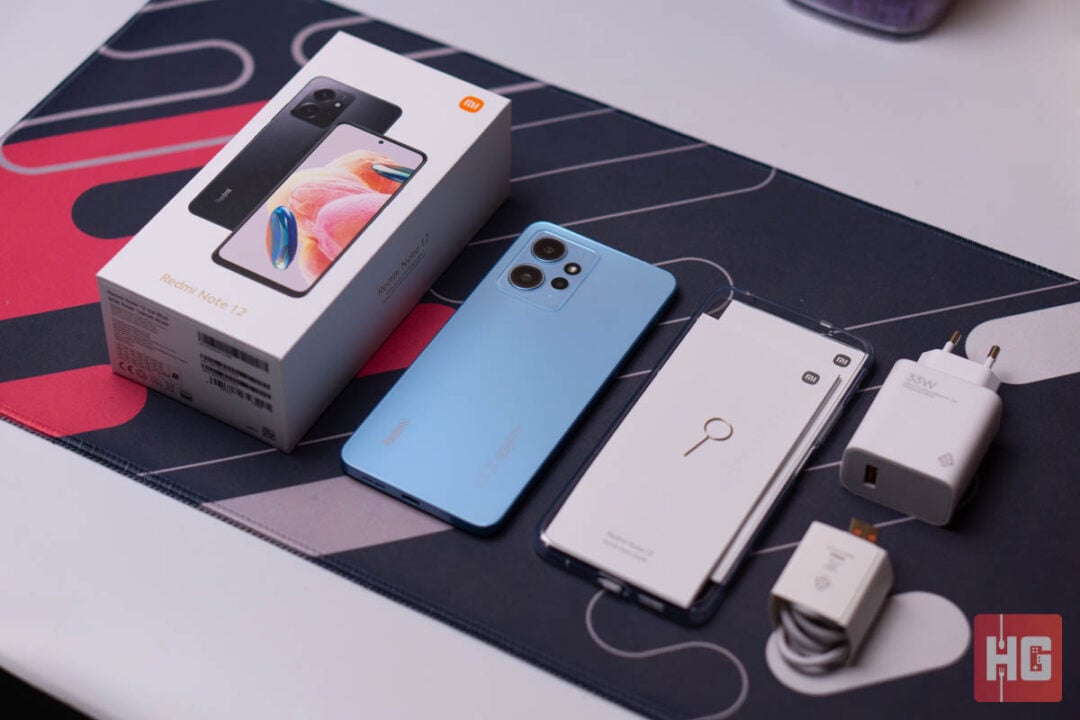
The Redmi Note 12 keeps it simple with a plain white box with its likeness and name embossed at the front. The smartphone is accompanied by a silicone case with a flap for its USB-C port, documentation, SIM ejector pin, a 33W Turbo Charge brick, and a white USB-A to USB-C cable.
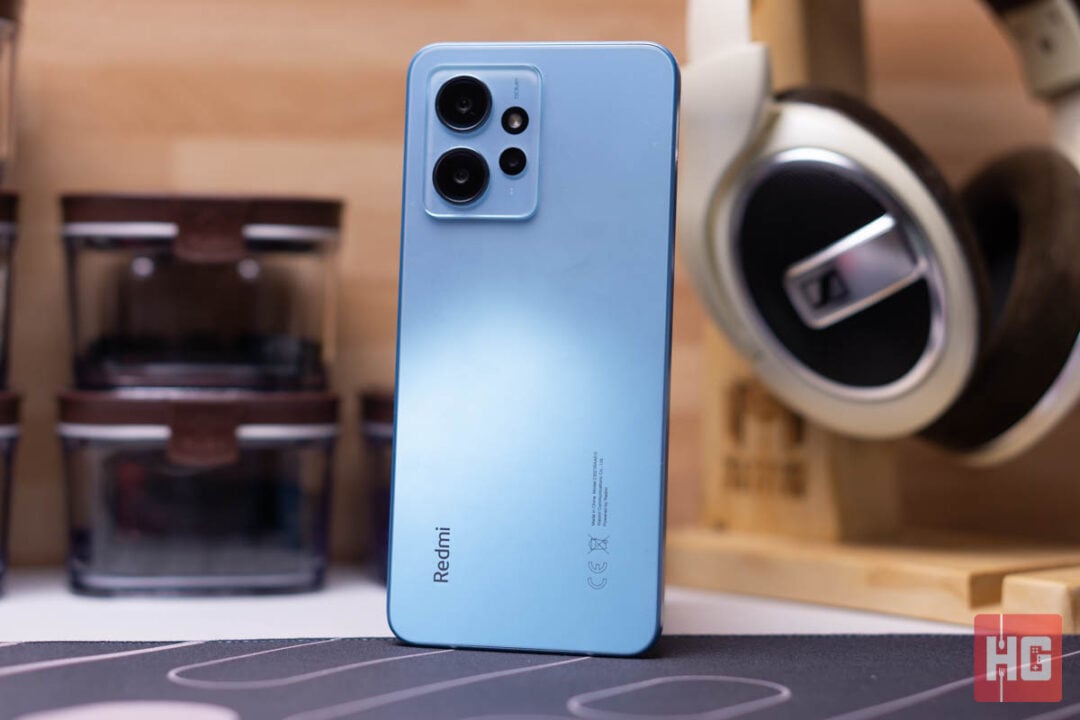
The smartphone has three color variants: Onyx Gray, Ice Blue, and Mint Green. We got the Ice Blue colorway for this review. It doesn’t stand out from the crowd but it does look pretty with a matte frosted finish that won’t show dust and fingerprints too much unlike a glossy finish. The rear is completely flat aside from the bump for its triple camera setup.
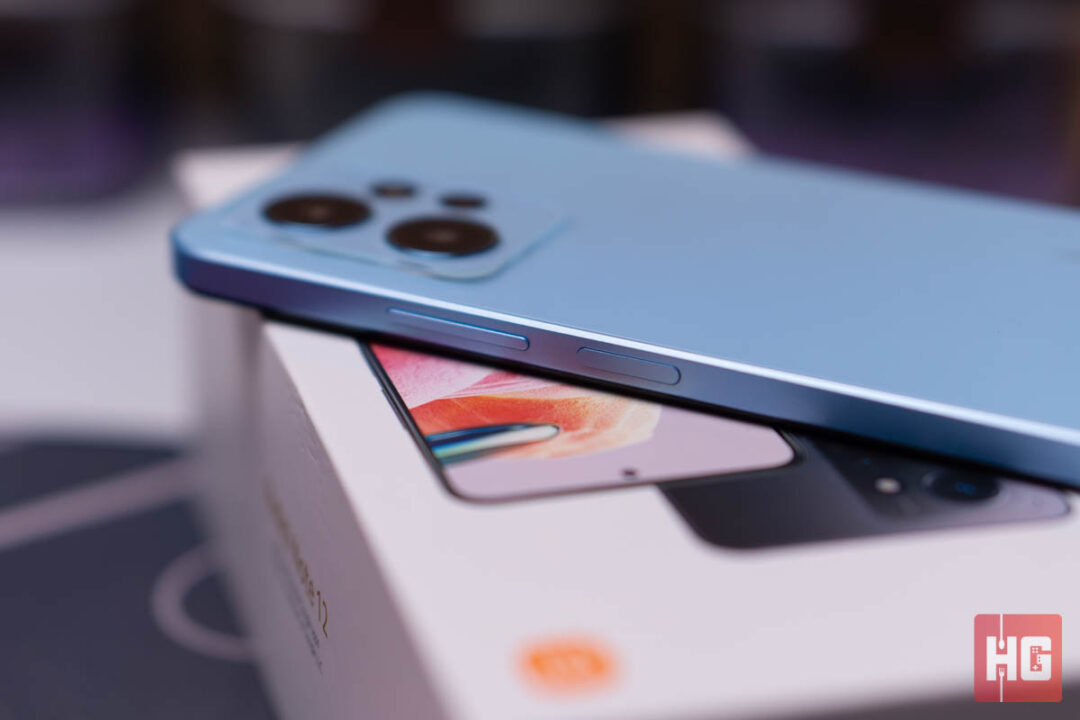
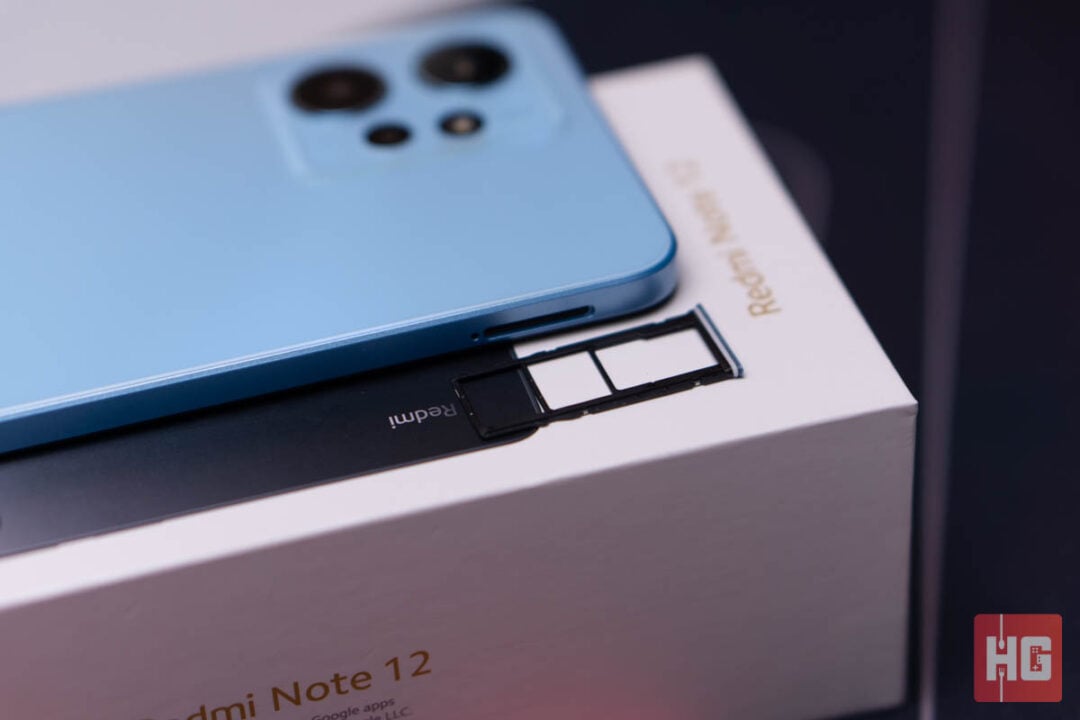
The chassis is made out of plastic but feels good to the touch. Its sides are flat but the corners are rounded. All its buttons are clustered at the right-hand side with the power button integrating a responsive fingerprint scanner. On the other side is a triple-cut SIM tray for two SIM cards and a MicroSD card.

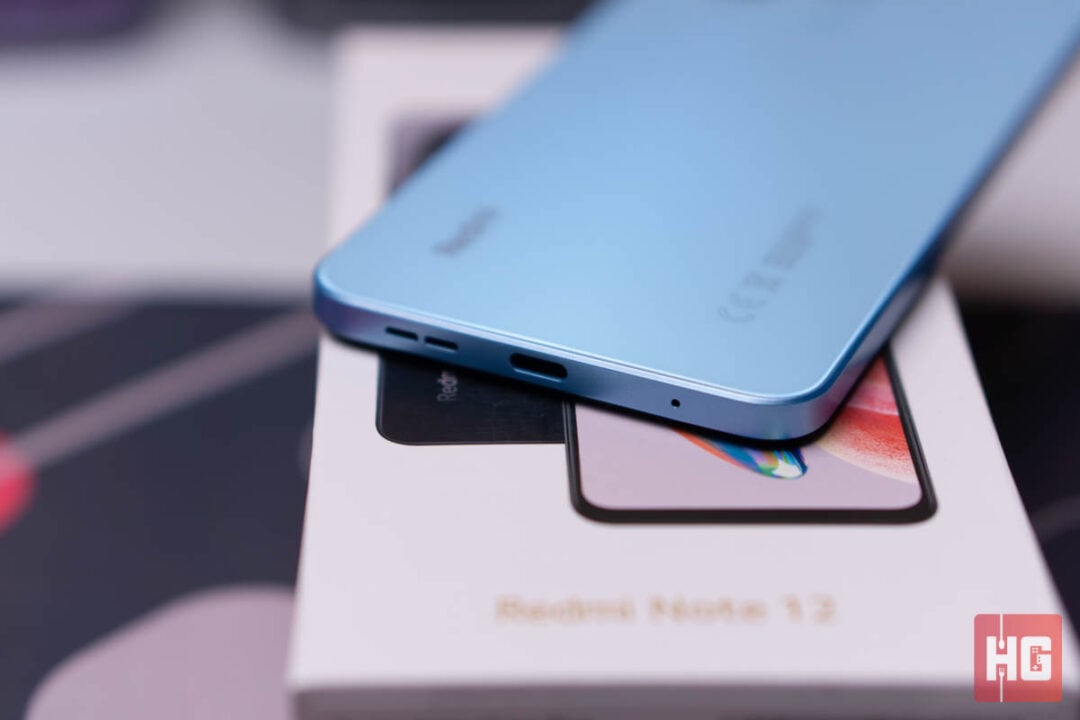
At the top is a 3.5mm audio jack for wired audio and even an IR blaster for additional functionality like using it as a remote for other devices. Its bottom houses grilles for the microphone and speaker as well as a USB-C port.
The Redmi Note 12 has a solid build overall. It won’t turn heads with its design but it’s not unattractive. The vibration motor is also worth a mention as it feels strong and tactile when typing or on notifications.
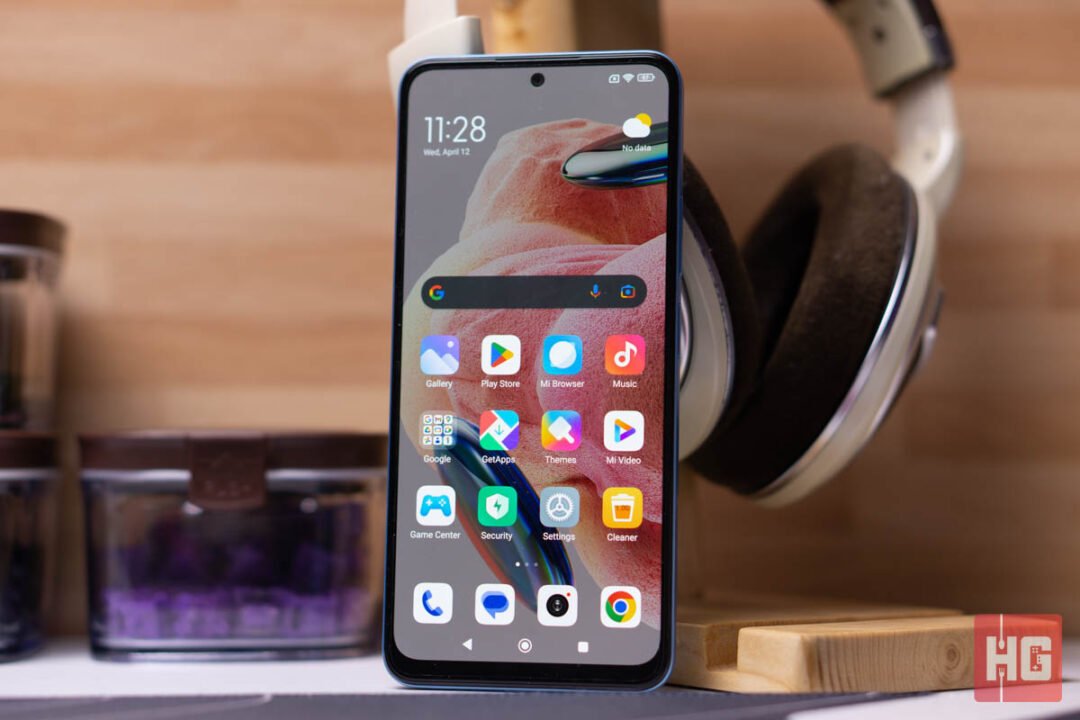
Xiaomi has managed to fit a 6.57-inch 2400 x 1080 AMOLED panel on a fairly budget-oriented smartphone. Refresh rate is also increased to 120Hz – significantly faster than its 90Hz peers. There is no HDR support no do they list color gamut on the webpage and it only supports Widevine L3 on streaming sites.
Display performance is fantastic for its position in the market. 120Hz makes everything smooth and the device smartly brings down the refresh rate when you’re displaying 60Hz content. Brightness maxes out at about 426.12 cd/m2 on manual mode, which is on par on more expensive smartphones.
Color gamut is excellent. It has nearly 100% on the sRGB scale and maxes out at 92.30% DCI-P3. Colors look well-saturated and pops from the screen. Accuracy, however, is slightly off being totally balanced but this shouldn’t be noticeable on daily use. Good resolution and contrast ratio also makes the display look crisp.
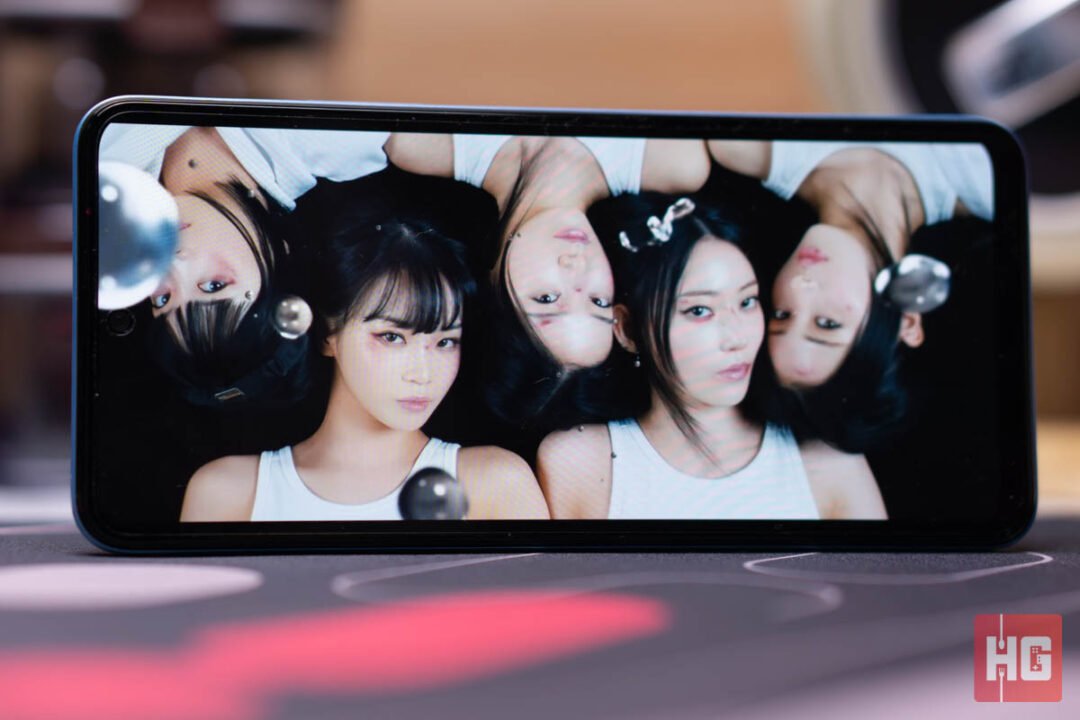
The Redmi Note 12 makes do with a single bottom-firing speaker instead of a dual stereo speaker setup. Audio quality is okay but not perfect. Vocals sound clean but bass is lacking, but most smartphones in this price has this problem as well. Instruments will start sound tinny at the upper end of the volume range.

MIUI 14 is based on Android 13 but looks the same as previous iterations but focuses on improvements with back-end optimization. Xiaomi says that system resources now take up less storage, rarely used apps will be auto-compressed to save space, and memory usage is improved for additional apps. They claim that energy consumption of 3rd party apps is lessened by up to 22 percent.
There is additional interconnectivity for Xiaomi smart devices via the Smart Devices toggle if you’re into automation. Its gallery app gets text recognition so you can parse through images within the device.
Privacy has also received additional features this time around. The pre-installed Security app conveniently places all options within a singular place. Xiaomi says that it has an additional malware protection plus you can manage app permissions.
Not much has changed in terms of design but they have removed quite a bit of built-in ads. It still comes with some level of bloat but nothing to egregious and you can get additional apps on their GetApps app store. The notification panel and command center are still split by swiping down from the left-top and right-top of the screen, respectively, but you can revert to the traditional one via the settings.
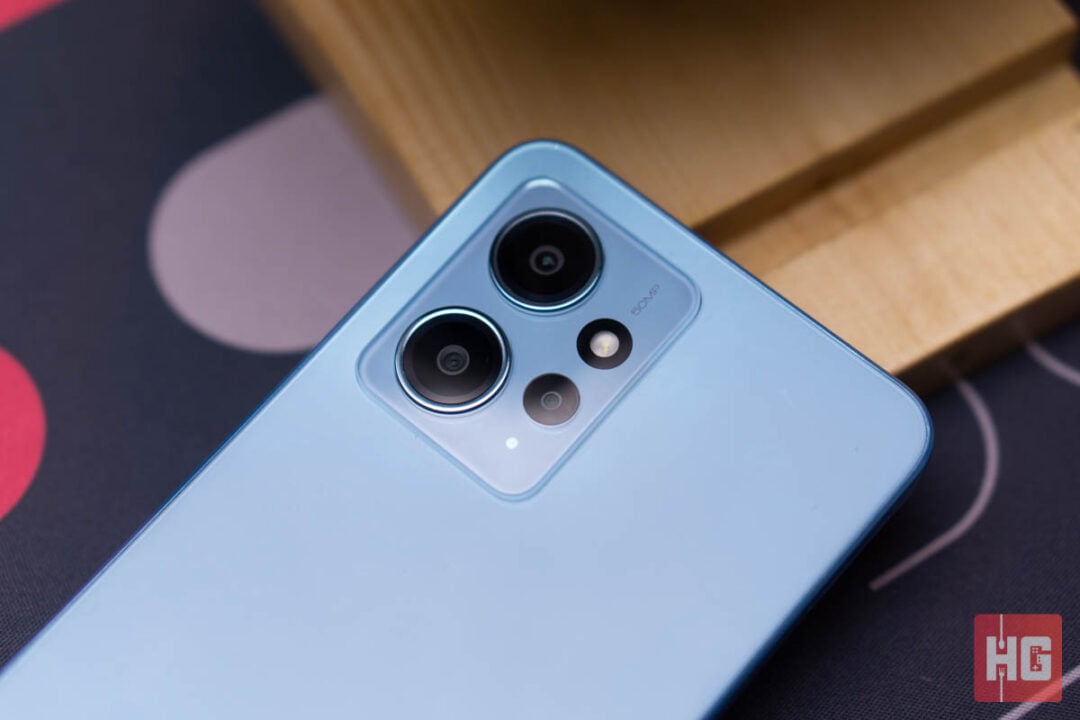
The Redmi Note 12 employs three cameras at the back. Its primary lens is a 50MP f/1.8 camera and is backed by the usual backups: an 8MP f/2.2 ultrawide and a 2MP f/2.4 macro lens. At the front is a 13MP f/2.45 selfie shooter.
Its camera app is standard affair. It supports HDR and AI Recognition and comes with additional functionalities like Document Scanner, Portrait, Night, Panorama, Short Video, Time-Lapse, and Slow Motion on top of Photo, Video, and Pro modes. You can select from ultrawide, main lens, and 2x zoom just at the side of the mode carousel. Videos are limited to 1080p30fps and 720p30ps on the main, ultrawide, and front cameras.




Its main camera takes good photos considering its price so long as proper conditions are met. In good lighting or under sunlight. Colors look natural and details have proper contrast. Saturation can be boosted with its AI scene recognition if they look a bit underwhelming. Shadows, however, look worse with underwhelming details and some blockiness at times.
Low-light performance is run-of-the-mill for its class. Quality takes a noticeable dip in nighttime with drab colors and soft detail. Noise is perceptible in most photos as well. Using Night Mode alleviates some of these but only for a degree and you’ll need to shoot for longer.


The ultrawide lens has less-than-stellar overall performance. It is good in natural light with natural colors but photos look soft with color fringing at the sides. Quality tanks in low-light, however, low saturation of colors and visible noise within the frame.

Its 13MP f/2.45 front-facing camera takes decent selfies in exceptional light but anything less will result in a soft image. There is also an aggressive beautification filter by default on photos so you may want to disable it or turn down the settings to get natural-looking snaps.

The Redmi Note 12 packs the new midrange Qualcomm Snapdragon 685 chipset with up to 8GB RAM and 128GB of internal storage. Its chip has slightly higher clock speeds with its four Cortex-A73 big cores running at 2.8GHz and four Cortex-A53 little cores at 1.9GHz. It does not support 5G nor WiFi 6 but there is Bluetooth 5.2.

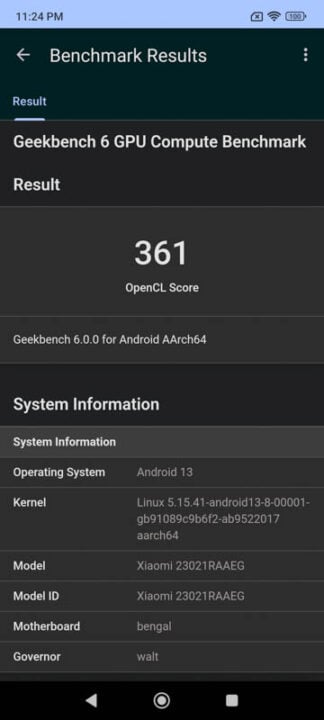
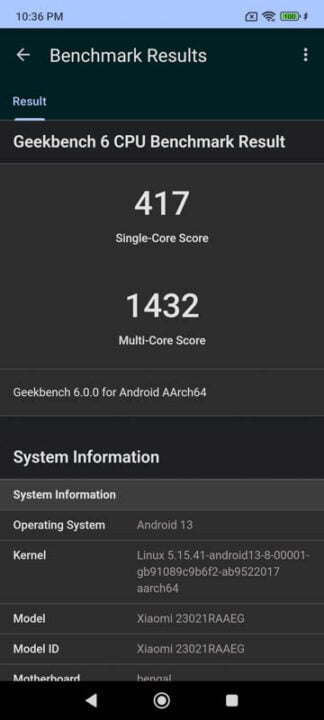
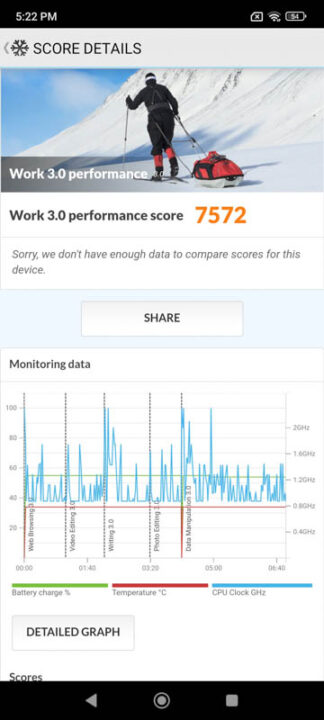
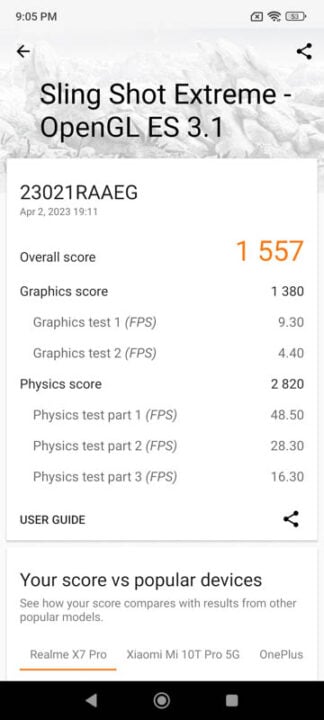
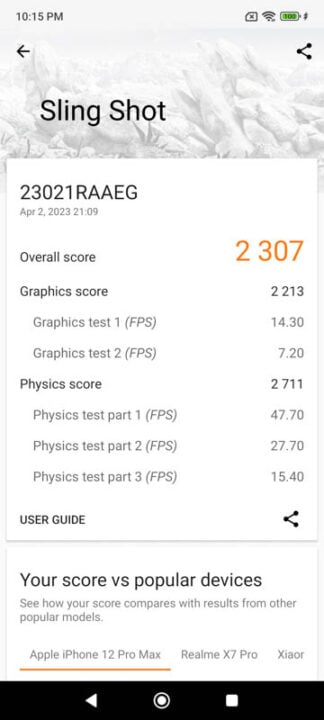
Benchmark figures are good but nothing impressive. Its higher clocks help with multi-core workloads and delivers smooth performance during general use. AnTuTu and PCMark Work 3.0 scores it at around 320,000 and 7,572, respectively.
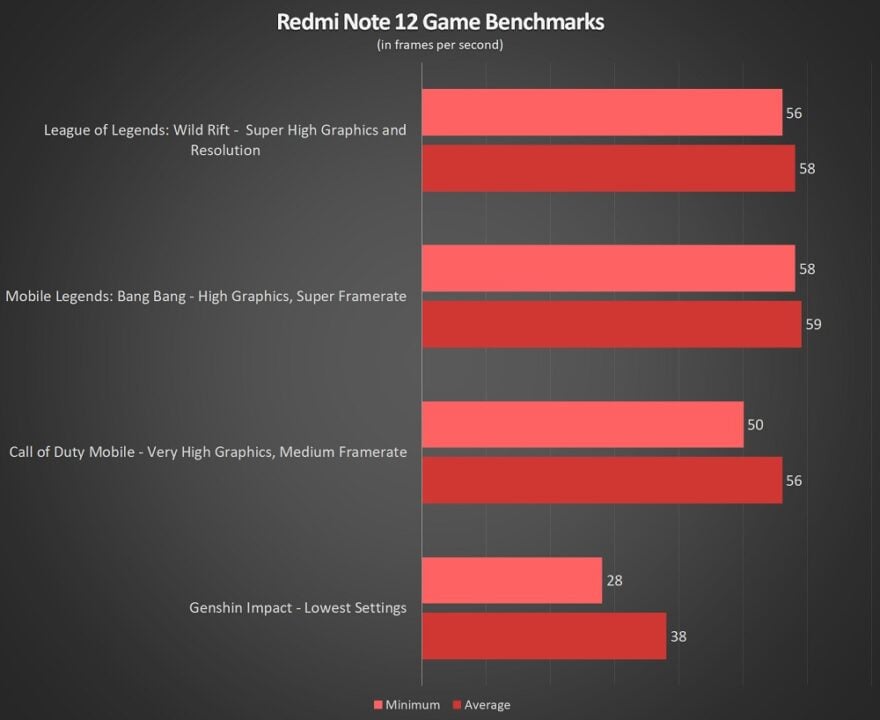
Graphics power comes from an Adreno 610 GPU. It doesn’t have the best horsepower in the category but it’s serviceable. Mainstream games have no problem running at more than 50fps but titles like Genshin Impact will run nearer at 30fps even at lowest settings when intense scenes start. Not all games currently support the chipset and none of our games supported the high refresh rate of the screen.

A 5,000mAh battery powers the Redmi Note 12, which is the standard capacity for a midrange device. It can last for quite a long time before needing a recharge thanks to its relatively low power Snapdragon 685. On average use, we were able to get just below 2 days in 1 charge. PCMark Work 3.0 ranks the device at 17 hours and 30 minutes with medium brightness and volume.
It supports 33W Turbo Charging and is bundled with the correct charging brick. The battery charges in a linear fashion with 5% to 100% only taking about an hour.

The Redmi Note 12 packs quite a punch for an affordable smartphone. It has an excellent screen, long battery life, and decent enough chipset to make day-to-day use and gaming smooth. The company has made strides to make their UI much lighter and it feels good in the hand.
There are some obvious cost-cutting measures to be found. The cameras, while serviceable in daylight and well-lit areas, tank performance in low-light conditions. Bloat has been reduced but the experience is still far from the standard Android smartphone with lightweight UI. Video is also lacking at only 30fps at both 1080p and 720p.
The Redmi Note 12 strikes a good balance of performance and price. It does have faults such as lousy low-light performance on the cameras, lack of 60fps video, and omission of stereo speakers. Despite that, its overall performance, great screen, and functional imaging system in good lighting are still solid enough to make a solid smartphone for the money.
The Redmi Note 12 starts at PhP 8,599 in the Philippines. Three variants are available: 4GB/128GB, 6GB/128GB, and 8GB/128GB at PhP 8,599, PhP 9,999, and PhP 10,999, respectively. The 4GB/128GB model is exclusive online while the others can be had via online stores, the brand’s TikTok shop, and authorized retailers nationwide.
You can get a free 10,000mAh Xiaomi Power Bank if you pre-order any of the Redmi Note 12 variants from April 15 – 21, 2023. You can head on over to their official Shopee, Lazada, TikTok stores or any authorized resellers in your area.
